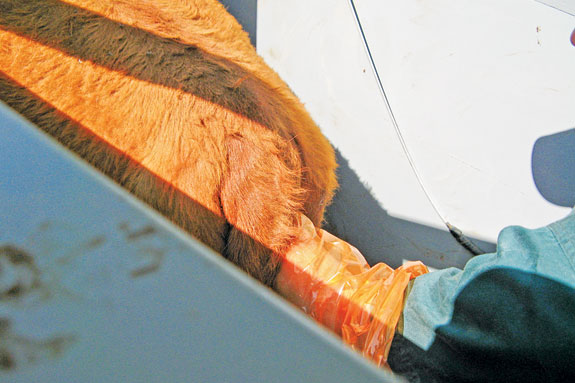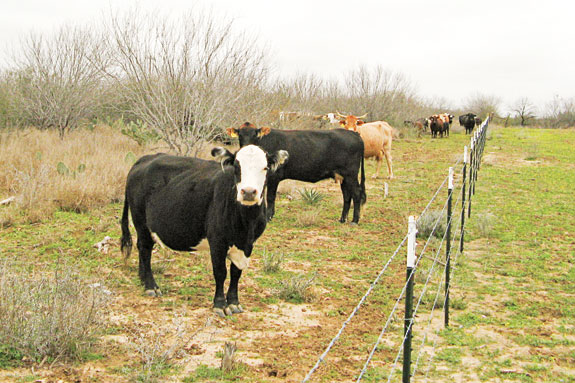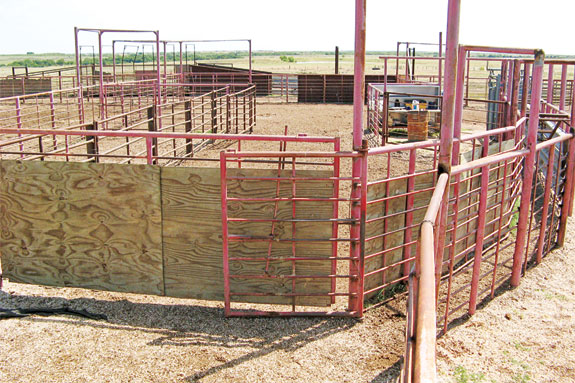Cattle production loss due to disease or parasites reduces profits and at today’s cattle prices, a dead animal is very costly.
A veterinarian can help design a health program to increase efficiency and profitability of the cow herd.
Dr. Steve Schultz, veterinary medicine consultant in Texas, says that a herd health plan includes genetics, management, nutrition, infectious diseases and facilities.
These components are interrelated and directly or indirectly affect herd health. After this comprehensive plan is developed, animal health problems are more easily diagnosed and treated.

Genetics
“For the commercial cattleman, phenotype (what the animal looks like) and fertility are the most important parts of genetics,” said Schultz. “Body condition, frame size, structural soundness, feet, teeth, eyes and udder are evaluated during development of the herd health plan for identification of females that may have trouble raising a calf.”
“Fertility is important because every cow must calve every year for the ranch to be profitable,” said Dr. Mike Wirtz, veterinarian and owner of TZ Cattle Company at Brenham, Texas.
“Cow fertility is checked by the veterinarian through palpation usually about 60 days after they are separated from the bulls.
During palpation, a veterinarian looks for abnormalities such as poor circulation, bladder problems and tumors on the ovaries, cervix and abdomen, in addition to feeling for a fetus.”
The herd health plan usually states that heifers will be evaluated about 60 days prior to breeding. These breeding soundness exams include reproductive tract scores, pelvic measurements and breeding weights.
Bulls will be evaluated for breeding soundness 30 to 60 days before they are put in pastures with cows. A breeding soundness evaluation (BSE) is an internal and external examination of the reproductive tract.
Semen is also checked for sperm cell motility and normality. The veterinarian will normally give bulls another BSE at the end of the breeding season to determine if their fertility decreased. This second evaluation may explain a low calf crop percentage.
In development of the health plan, adaptation of herd genetics to the ranch environment will be evaluated.
“Persistent problems with respiratory diseases, heat stress, foot rot and general inability to keep the body condition of your brood cows at a 5 or above throughout the year are indicators that cattle are unsuited to the climate,” said Stuart Gardner, USDA Natural Resource Conservation Services (USDA-NRCS) grazing land specialist in Lafayette, Louisiana.
“Placing animals with large body size, high milk production and other attributes that increase nutrient requirements in an environment that provides average or low quality and quantity of forage will also have a drastic effect on productivity.”

Management and nutrition
“The second part of the herd health plan details management practices that affect herd welfare,” stated Schultz.
“In this section of the plan, palpation and culling open cows will be stressed once again. If it is not already in place, a controlled breeding season will be identified and methods for achieving this goal will be listed.”
“For a cowherd to be profitable, each female must calve every year and that requires controlled breeding and calving seasons,” said Dr. Bruce Carpenter, extension livestock specialist at Fort Stockton, Texas.
“When the calving season is too long, management is more difficult and many cows will not calve every year.
Shorter calving seasons make the bottom line better because both herd management expenses and marketing income can be better controlled.”
Age grouping is usually discussed during development of the herd health plan. Many producers pasture heifers separately from mature cows so that they can be bred 30 days earlier.
Another reason to separate heifers from cows is because of nutritional requirement differences. Heifers are normally still growing when bred, so they need more nutrients than mature cows.
A defined pasture rotation system is also part of the plan because proper pasture management is important for herd health and for providing most of the cattle nutrient requirements.
Feed costs can be reduced considerably when sufficient forage is available. Properly executed rotational grazing results in more even use of the pastures and provides non-use periods for forage recovery.
Winter forage can be produced either by planting winter pastures or stockpiling warm-season perennial plants.
Herd nutrition is evaluated through body condition scores. If the cattle are at body condition scores of 5 or less, the veterinarian will recommend consultation with an animal nutritionist or a state extension specialist. A mineral program is designed that matches deficiencies of the area.

Infectious diseases and facilities
“The infectious disease portion of the herd plan addresses herd immunity and reduction of animal stress,” explained Schultz.
“Vaccination protocols are developed for prevalent diseases in the area. These protocols will include methods for proper vaccine handling.
Fly control and deworming programs will be developed and included in this section of the plan.
“Cattle-working facilities are inspected to ensure they allow low-stress cattle handling, are well maintained and are kept clean and dust-free.
It is recommended that pens be sprinkled with water when they are dry and dusty before working cattle. Build a roof over the working area to reduce heat stress on animals and people.”
There are several benefits to establishing a relationship with a veterinarian. Development and execution of a comprehensive herd health plan reduces the number of sick animals and increases profits.
When a veterinarian is familiar with your operation, he is able to quickly react when you have animal health problems.
A herd health plan identifies dates for routine palpation, breeding sounding exams and other veterinarian-performed tasks which allows planning his schedule around these dates. ![]()
PHOTOS:
Top: A pasture rotation system allows grass recovery between grazing periods.








